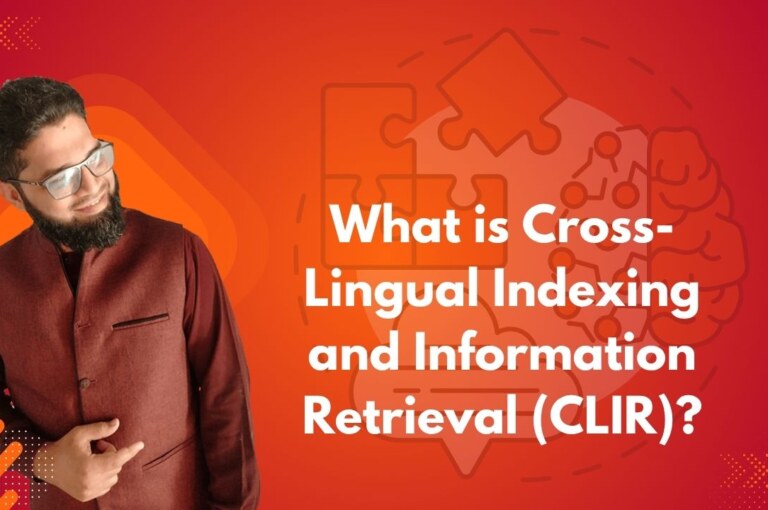Cross-Lingual Indexing and Information Retrieval (CLIR) is the process of searching for and retrieving information in one language from sources written in different languages. It helps break down language barriers, allowing users to access knowledge that isn’t limited to their native tongue.
For example, if someone searches for “history of aviation” in English, a CLIR system can retrieve relevant documents in Spanish, French, or Chinese—even if they were originally written in those languages.
This process often relies on technologies like natural language processing (NLP), entity type matching, and contextual domains to preserve semantic accuracy across languages.How CLIR Works!
CLIR consists of two main components:
1st:. Cross-Lingual Indexing → This involves creating an index that connects words and concepts across multiple languages, allowing efficient retrieval of information regardless of the search language. 2nd:. Cross-Language Information Retrieval → This is the actual process of retrieving documents in a different language than the one used in the search query by either translating queries or using language-independent representations.For example, if a user types “global warming effects” in English, CLIR allows them to find research papers written in German, Japanese, or Arabic that discuss the same topic.
Challenges in CLIR
CLIR isn’t just about translation—it involves understanding meaning and context across languages. Some of the key challenges include:
- Translation Ambiguities → Words in one language might have multiple meanings in another, which can lead to incorrect matches. For example, “bank” can mean a financial institution or the side of a river.
- Cultural and Conceptual Differences → Some phrases or ideas may not have direct equivalents in other languages.
- Lack of Sufficient Language Resources → Some language pairs have fewer bilingual dictionaries, parallel texts, or trained AI models, making accurate retrieval harder.
Approaches Used in CLIR
To overcome these challenges, different methods are used in CLIR:
- Dictionary-Based Methods → Translating words using bilingual dictionaries.
- Parallel Texts (Corpora) → Learning from documents that have been translated into multiple languages.
- Machine Translation → Using AI-powered systems like Google Translate to convert queries or documents into the desired language.
- Cross-Lingual Embeddings → Mapping words from different languages into a common space where similar meanings align, even if they have different spellings and pronunciations.
- Advances in Multilingual NLP → [ACL Anthology]
- Cross-Language Information Retrieval → [Wikipedia]
Real-World Applications of CLIR
CLIR is used in various fields, including:
- Search Engines & Online Information Retrieval → Enables multilingual searches, ensuring that users can find content written in different languages.
- Academic Research & Digital Libraries → Helps researchers access studies published in other languages.
- E-Commerce & International Business → Allows businesses to serve customers worldwide by making product listings searchable across multiple languages.
- Artificial Intelligence & Machine Learning → Enhances language models that need to process information from different linguistic sources.
Wrap Up
Cross-Lingual Indexing and Information Retrieval is a powerful tool for breaking language barriers, ensuring that information is accessible regardless of the language it’s written in. While challenges like translation ambiguity and cultural differences exist, advancements in machine learning, AI translation, and multilingual search techniques are helping improve its effectiveness. CLIR continues to be a crucial technology for global information access, research, and AI-driven communication.
Want to Go Deeper into SEO?
Explore more from my SEO knowledge base:
▪️ SEO & Content Marketing Hub — Learn how content builds authority and visibility
▪️ Search Engine Semantics Hub — A resource on entities, meaning, and search intent
▪️ Join My SEO Academy — Step-by-step guidance for beginners to advanced learners
Whether you’re learning, growing, or scaling, you’ll find everything you need to build real SEO skills.
Feeling stuck with your SEO strategy?
If you’re unclear on next steps, I’m offering a free one-on-one audit session to help and let’s get you moving forward.





Leave a comment